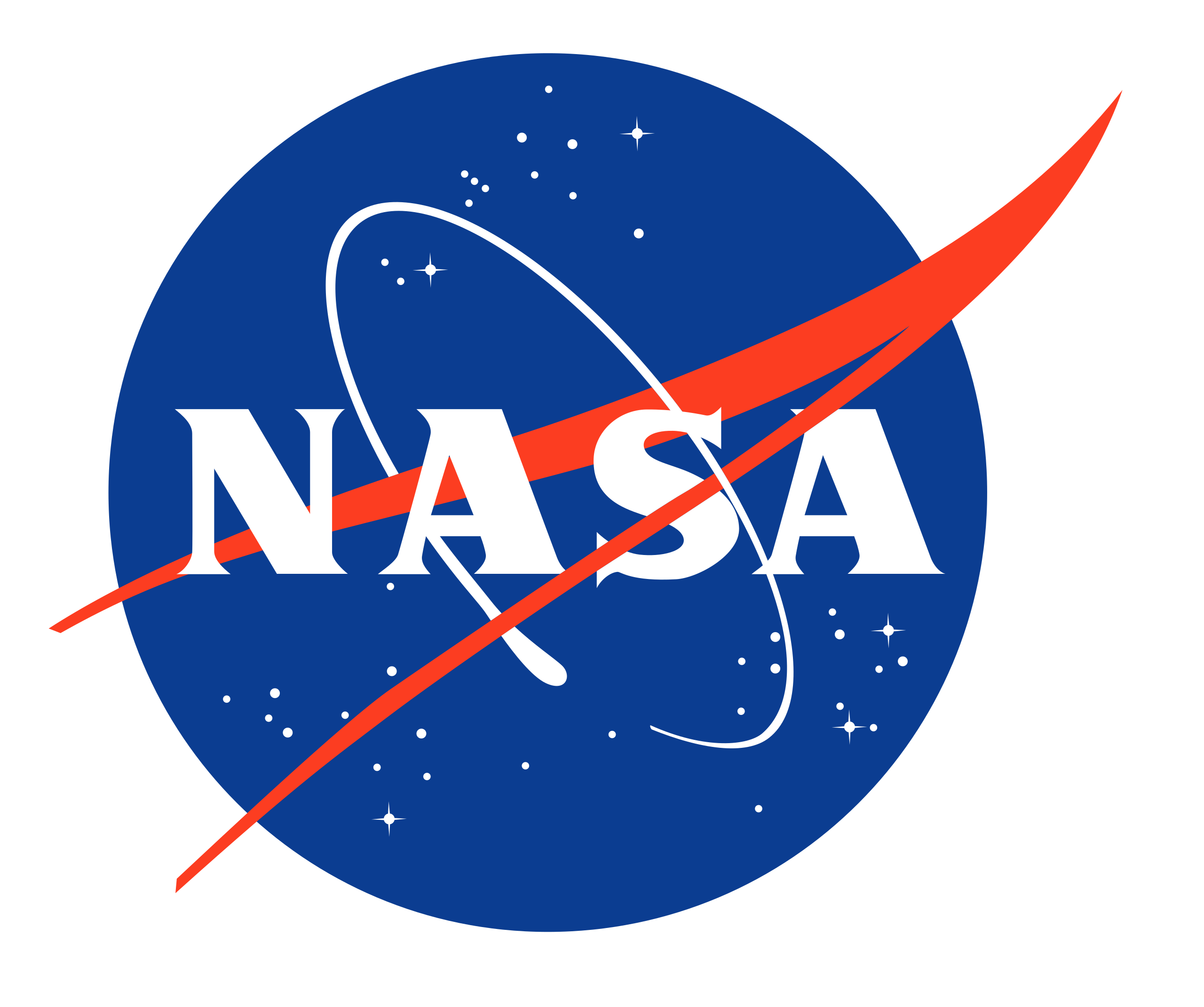Enjoy a moment of Zen with this fly-through of the Orion Nebula, based on images captured by NASA and ESA (European Space Agency) telescopes The image shows infrared light, or wavelengths that the human eye cannot see. Stars radiate little or no light in these wavelengths, so the image shows only dust.
All spinning objects, from carousels to planets, generate centripetal force. If a planet rotates too fast, that force can pull it apart. Before that happens, the planet will experience “flattening,” or bulging around its midsection, as seen in this animated illustration of a brown dwarf, Jupiter, and Saturn.
NASA Spitzer Space Telescope has identified the fastest-spinning brown dwarf known.
This animation shows a type of gas giant planet known as a hot Jupiter that orbits very close to its star. Finding more of these youthful planets could help astronomers understand how they formed and if they migrate from cooler climes during their lifetimes.
Two massive black holes are locked in a dance at the center of the OJ 287 galaxy. The larger black hole is surrounded by disk of gas; it is also orbited by a smaller black hole that collides with the disk, producing a flare brighter than 1 trillion stars.
636 images, graphs, and illustrations have been compiled into this loop-able animation showing off over 16 years of science from NASA's Spitzer Space Telescope.
This artist's animation with annotations depicts the exoplanet LHS 3844b, which is 1.3 times the mass of Earth and orbits an M dwarf star. The planet's surface may be covered mostly in dark lava rock, with no apparent atmosphere, according to observations by NASA's Spitzer Space Telescope.
This artist's animation depicts the exoplanet LHS 3844b, which is 1.3 times the mass of Earth and orbits an M dwarf star. The planet's surface may be covered mostly in dark lava rock, with no apparent atmosphere, according to observations by NASA's Spitzer Space Telescope.
Soar through this cosmic landscape filled with bright nebulas, as well as runaway, massive and young stars. The image comes from NASA's Spitzer Space Telescope, which sees the universe in infrared light.
This video shows artist's concepts of the seven Earth-sized planets of TRAPPIST-1, an exoplanet system about 40 light-years away, based on data current as of February 2018. Each planet is shown in sequence, starting with the innermost TRAPPIST-1 b and ending with the outermost TRAPPIST-1 h.
This video details a system of seven planets orbiting TRAPPIST-1, an ultra-cool dwarf star. Over 21 days, Spitzer measured the drop in light as each planet passed in front of the star. Spitzer was able to identify a total of seven rocky worlds, including three in the habitable zone where liquid water might be found.
This video depicts artist's concepts of each of the seven planets orbiting TRAPPIST-1, an ultra-cool dwarf star. Over 21 days, NASA's Spitzer Space Telescope measured the drop in light as each planet passed in front of the star.
This video details a system of seven planets orbiting TRAPPIST-1, an ultra-cool dwarf star. Over 21 days, Spitzer measured the drop in light as each planet passed in front of the star. Spitzer was able to identify a total of seven rocky worlds, including three in the habitable zone where liquid water might be found.
This video details a system of seven planets orbiting TRAPPIST-1, a discovery of the Spitzer Space Telescope, operated by NASA's Jet Propulsion Laboratory in Pasadena, California.
This animation shows one possible scenario for the rocky exoplanet 55 Cancri e, nearly two times the size of Earth. New Spitzer data show that one side of the planet is much hotter than the other - which could be explained by a possible presence of lava pools.
This animation shows a cool star, called W1906+40, marked by a raging storm near one of its poles. The storm is thought to be similar to the Great Red Spot on Jupiter. Scientists discovered it using NASA's Kepler and Spitzer space telescopes.
This animated movie zooms into the location of a newfound planet dubbed HD 219134b -- the closest confirmed rocky planet, and the closest "transiting" planet, outside our solar system. The planet is a bit bigger than Earth and orbits too close to its star to be habitable.
This video shows a continually looping view of the Spitzer Space Telescope's new infrared view of our Milky Way Galaxy.
This video, created from a sequence of images from the Hubble Space Telescope, shows a pulse of light emanating from the protostellar object LRLL 54361.
Starting from Earth, we quickly zoom out of the solar system into our sun's local neighborhood, populated by the closest stars that lie within a few light-years of Earth. Swinging around, we shift our attention to the dwarf star GJ 436, which is so faint that it is invisible to us until we get close enough to see its dim glow.
NASA's Spitzer Space Telescope has, for the first time, captured the light emanating from a distant super Earth, a planet more massive than Earth but lighter than Neptune.
NASA's Spitzer Space Telescope has, for the first time, captured the light emanating from a distant super Earth, a planet more massive than Earth but lighter than Neptune.
This animation illustrates an unexpected warm spot on the surface of a gaseous exoplanet. NASA's Spitzer Space Telescope discovered that the hottest part of the planet, shown here as bright, orange patches on the surface, is not directly under the glare of its star but over to the side.
This animation illustrates an unexpected warm spot on the surface of a gaseous exoplanet. NASA's Spitzer Space Telescope discovered that the hottest part of the planet, shown here as bright, orange patches on the surface, is not directly under the glare of its star but over to the side.
This video showcases the Saturnian system, beginning with the planet itself and panning out to its newest addition -- an enormous ring discovered in infrared light by NASA's Spitzer Space Telescope.
This artist's animation shows a celestial body about the size of our moon slamming at great speed into a body the size of Mercury. NASA's Spitzer Space Telescope found evidence that a high-speed collision of this sort occurred a few thousand years ago around a young star, called HD 172555, still in the early stages of planet formation. The star is about 100 light-years from Earth.
This artist's animation illustrates how silicate crystals like those found in comets can be created by an outburst from a growing star. It first shows a young sun-like star encircled by its planet-forming disk of gas and dust. The silicate that makes up most of the dust would have begun as non-crystallized, amorphous particles.
This animation shows a computer simulation of the planet HD 80606b from an observer located at a point in space lying between the Earth and the HD 80606 system. The animation starts 2.2 days before the moment of close approach and ends 8.9 days later. The blue areas are reflected starlight (the blue color arises mainly from absorption by sodium and potassium in the planetary atmosphere). Red regions are areas of the planet that are glowing with their own intrinsic heat.

































